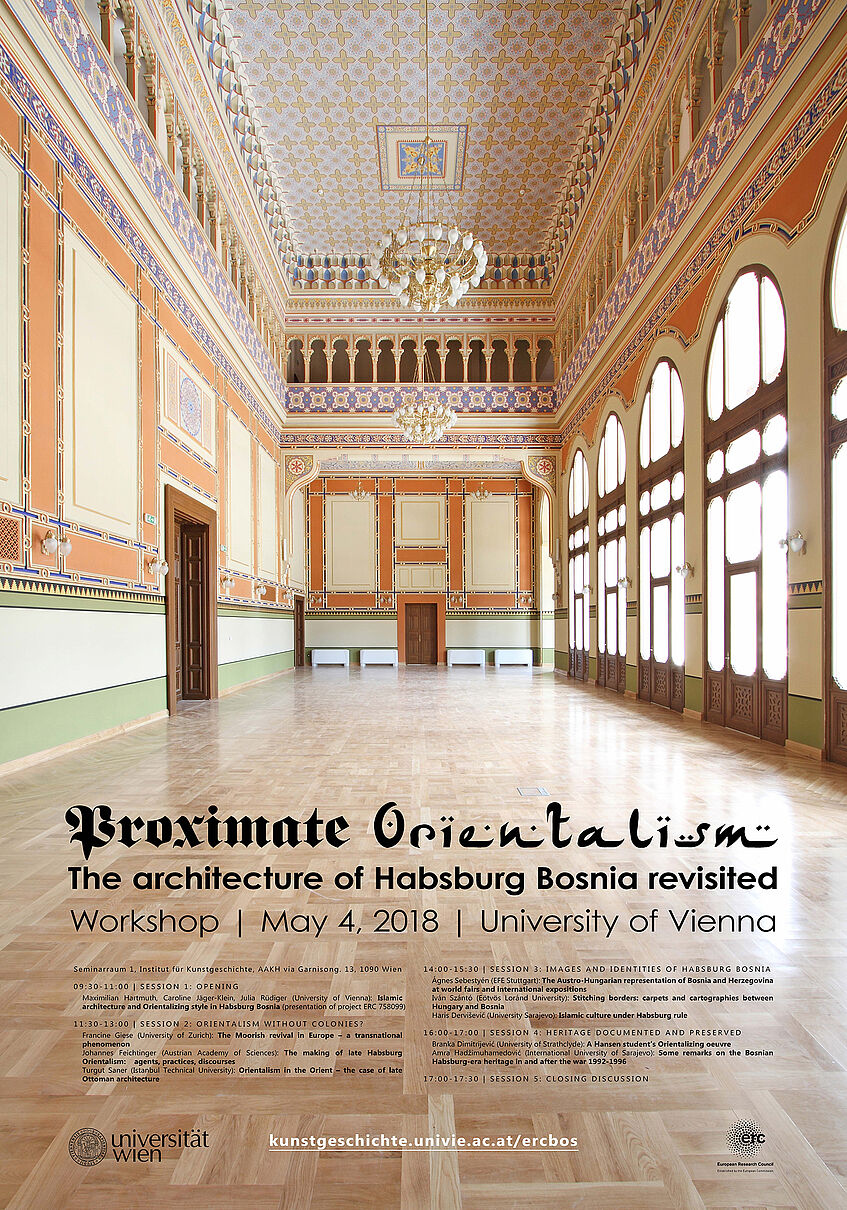Proximate Orientalism

Proximate Orientalism
Re-Examining the Architecture of Habsburg Bosnia
A Workshop at the University of Vienna’s Department of Art History, May 4, 2018
The peripheral Ottoman lands of Bosnia and Herzegovina were occupied by Habsburg troops in 1878; an official annexation did not take place until 1908. Already ten years later Bosnia and Herzegovina became part of the Kingdom of Serbs, Croats and Slovenes (renamed Yugoslavia in 1929).
Despite the brevity of Habsburg rule in Bosnia-Herzegovina, the transformation it witnessed was extraordinary. The fact that around a third of Bosnia’s population adhered to the Muslim faith – a figure that did not change significantly during Habsburg rule, despite significant emigration by Muslim Bosnian to Ottoman territories – amplified the challenge of building hegemonic structures in Austria-Hungary’s Balkan outpost. Its traditional elite, too, was predominantly Muslim. Bosnian townscapes, with low-rise dwellings towered over by slender minarets and domes, echoed five centuries of rule from Istanbul.
It is in the changing of these townscapes that the presence of a new hegemonic power made itself felt most lastingly. Modern construction techniques, enabling the swift construction of monumental edifices with elaborately composed facades, were to impress the locals and herald what the agents of empire understood by progress. They were to signal the arrival of a new order – and of orderliness.
While after previous centuries’ conquests of Ottoman territories by the Habsburgs, local Muslim populations had traditionally fled or were expelled, this was not anymore the policy in Bosnia. Even more, the specificity of its ‘Oriental’ character was to be preserved, at least to a degree acceptable to Austro-Hungarian decision-makers. Architecture was recognized as a means of broadcasting this policy. The Habsburg period in Bosnia saw a renovation of Islamic institutions; many mosques or madrasas were completely rebuilt in a style that typically referenced details of famous Islamic buildings in Spain or Egypt rather than Ottoman ones. The acquaintance with local traditions, and the inclination to incorporate them, is oftentimes more evident in the layouts of buildings than on their façades.
The style typically employed in the planning of these buildings also saw a distribution beyond exclusive associations with the Muslim community. The imperial provincial government, staffed by Austro-Hungarian expatriates, endorsed the application of this Orientalizing style in the construction of a variety of building types that included town halls, schools, and railway stations – that is to say, types of buildings relevant to all confessional communities of Bosnia. There exists, moreover, a considerable number of urban dwellings in this eclectic style.
The five-year project ISLAMIC ARCHITECTURE AND ORIENTALIZING STYLE IN HABSBURG BOSNIA, 1878-1918 (kunstgeschichte.univie.ac.at/ercbos), funded by the European Research Council, will re-examine this phenomenon and its heritage. The workshop stakes out the field by addressing various academic discourses involved – on Bosnia’s multifaceted cultural inheritance, on the transformation(s) of Islamic culture(s) in the long nineteenth century, and on the global bearing of processes designated ‘Orientalism’ in recent decades’ debates.
-> Download Tagungsposter
-> zum Programm
